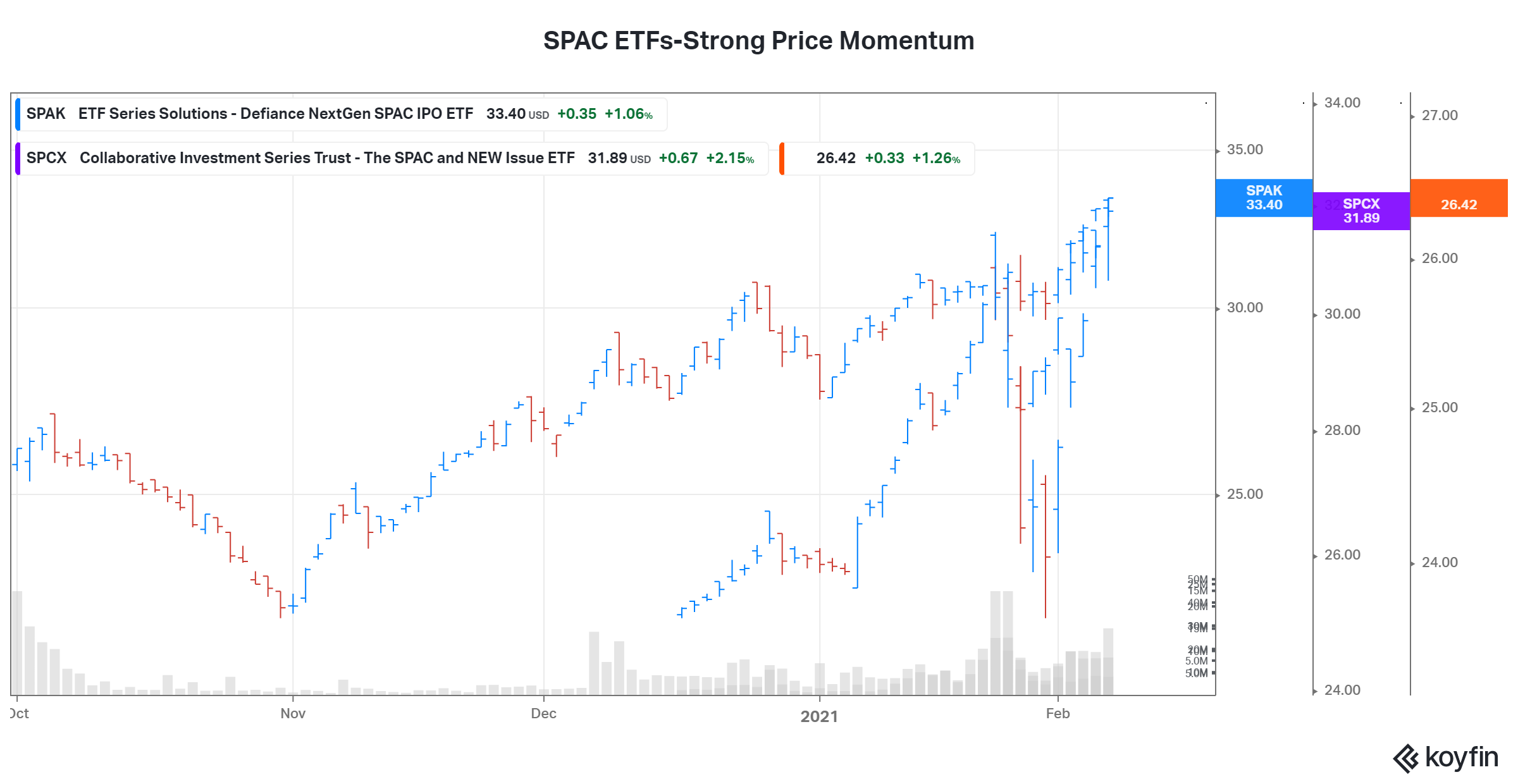Best SPAC ETFs for Investors Amid the Hot SPAC Trend
Right now, SPACs are the latest trend on Wall Street. Investors who are trying to get the piece of the trend have another option to choose from — SPAC ETFs.
Feb. 8 2021, Published 1:33 p.m. ET

SPACs (special purpose acquisition companies) are the new rage in the market right now. SPACs experienced a resurgence in 2020 as companies jostled to go public fast amid the surging stock market. SPACs or black-check companies help private companies go public faster without the rigorous process followed under a traditional IPO. In 2020, nearly 250 companies went public via SPACs, which raised more than $83 billion. So far this year, the number has already reached 100. SPACs are usually sponsored by experienced investors with a good reputation.
Investors who want to get in on the SPAC action now also have the option of buying SPAC ETFs instead of buying individual SPACs. Standalone SPACs can be very risky, especially before blank-check companies announce deals. You will need to own a number of SPACs to get the benefit of diversification. SPAC ETFs are aimed at addressing these concerns. According to Seeking Alpha, SPAC ETFs have already attracted $200 million in AUM amid soaring investor interest. The chart below shows the strong price momentum in SPAC ETFs, which underscores investors' interest in them.

SPAK was the first SPAC ETF
The first SPAC ETF, Defiance’s Next Gen SPAC Derived ETF (SPAK), launched in October 2020. It's up about an impressive 23 percent from its launch date. According to Defiance, SPAK tracks the Indxx SPAC & NextGen IPO Index, which is a passive rules-based index that tracks the performance of the common stock of newly listed SPACs ex-warrants and IPOs derived from acquisition companies.
These rules include a 60 percent weighting to IPO companies that come from SPACs and a 40 percent weighting to common stock of new SPACs. Out of the three SPAC ETFs, it has the lowest expense ratio at 0.45 percent. The number of fund holdings is 137 with top holdings being Draftkings Inc. (9.8 percent), Opendoor (5.61 percent), Pershing Square Tontine Holdings (4.89 percent), Churchill Capital (4.68 percent), and Skillz (3.75 percent).
Tuttle’s SPCX is heavily weighted towards SPACs without targets
The second SPAC ETF is the Tuttle Tactical Management’s SPAC and New Issue ETF (SPCX). It launched in December 2020 and has an expense ratio of 0.95 percent. It's the first actively managed ETF and allows for an active and flexible portfolio of leading SPACs. The ETF’s price is up nearly 27 percent in its short existence. On Feb. 4, SPCX announced that it's the first and only SPAC ETF to garner over $100 million in AUM.
Matthew Tuttle, the CEO and CIO of Tuttle Tactical Management LLC, commented, “The key to our strategy, however, is our active approach to separating the wheat from the chaff. We feel that our focus on pre-deal SPACs backed by strong sponsor teams will prove itself over the longer term.”
Four of SPCX's top five holdings don't have a merger target yet. The pre-deal SPAC, Churchill Capital IV is SPCX’s top holding and forms 5.01 percent of its total funds. Its other top holdings include Starboard Value Acquisition (4.54 percent), Cohn Robbins Holdings (3.81 percent), Decarbonization Plus Acquisition (3.27 percent), and CC Neuberger Principal Holdings (2.93 percent).
Morgan Creek-EXOS’s SPXZ
The third and newest SPAC ETF, the Morgan Creek-Exos SPAC Originated ETF (SPXZ), launched on Jan. 26. Morgan Creek’s CEO and CIO, Mark Yusko, said that SPXZ’s “real edge” will come from how its portfolio is constructed. About two-third of SPXZ’s holdings will be SPACs that have already identified a company to take public, while one-third will be the ones still seeking targets. This ETF has the highest expense ratio of the three ETFs at 1.0 percent.

SPXZ’s top holdings include Skillz (2.23 percent), Virgin Galactic (2.22 percent), Danimer Scientific (2.2 percent), Desktop Metal (2.1 percent), and Dermtech (2.06 percent). The ETF has seen its price rise by nearly 5 percent since inception.
Which SPAC ETF should you choose?
The major difference between SPAK and SPCX is that SPAK has a high weightage of companies that have gone public via SPACs, while SPCX gives a high weightage to SPACs still looking for merger targets. Therefore, SPCX is more appropriate for risk-tolerant investors. Investing in a company that hasn't identified a target yet is risky. SPXZ tries to combine the best of both worlds with nearly equal weightage to both pre and post-IPO SPACs. Take your pick among the three SPAC ETFs based on your objective and risk appetite.
